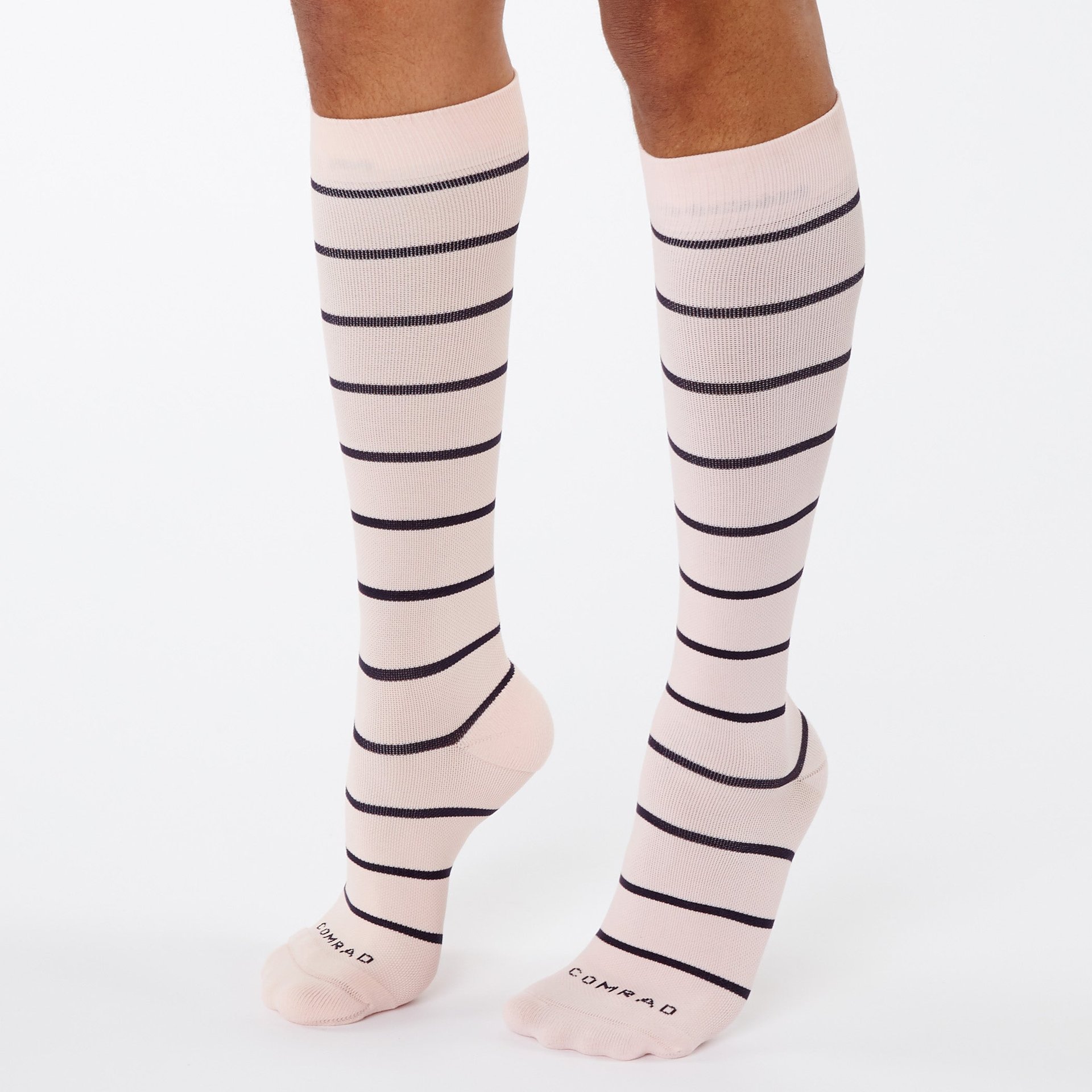Add compression socks to your long-haul travel routine
When I boarded a red eye from New York to London recently, all I wanted to do was tune into a podcast and then fall asleep. But as I dozed off during taxiing, I suddenly remembered—my socks!


When I boarded a red eye from New York to London recently, all I wanted to do was tune into a podcast and then fall asleep. But as I dozed off during taxiing, I suddenly remembered—my socks!
Despite flying on transatlantic and long-haul flights multiple times a year for the last decade, the thought of wearing compression socks had never occurred to me. But when a doctor told me that women who take the contraceptive pill should consider wearing compression socks on long flights, my interest was piqued.
Suddenly, it seemed, compression garments were everywhere. Supermodel Karlie Kloss pronounced that she never boards a flight without compression wear; trendy, social-media savvy brands like Comrad Socks and VIM & VIGR suddenly popped up in my feeds; and New York Magazine’s shopping guide The Strategist endorsed compression socks multiple times. Once I shed my idea that compression socks were only for the elderly or those recovering from surgery, I decided it was time to integrate them into my long haul travel routine.
Anyone who has ever taken their shoes off on a flight and landed to find that their boots won’t lace up will see an obvious use-case for wearing compression socks: They reduce swelling. But their real value lies beneath the surface. They reduce the risk of deep vein thrombosis, or DVT, a blood clot that occurs when blood pools in the lower extremities thanks to gravity and lack of movement. While DVT can occur in frequent fliers, it doesn’t have much to do with altitude or a pressurized cabin—the culprit is sitting for long periods of time, though it is compounded by the dehydration that can occur on a long flight. The pressure of tight compression socks helps improve circulation while you’re sitting.
This explains why compression socks are often used by people who are immobile due to age or a recent surgery. But it’s important to note that smokers and those on certain forms of contraception are also at a increased risk for DVT. (Britain’s National Health Service notes that the “baseline risk is small” as it relates to contraception.)
So why should you care about DVT? According to Christopher Harper, a Utah-based physical therapist and orthopedic specialist, DVT carries a rather serious risk. “One significant danger of blood clots besides pain and swelling, most commonly occurring in the calf, is the breaking loose of the clot,” Harper says. “If the clot travels in your circulatory system, then termed an embolism, it can make its way to a lung. A pulmonary embolism (PE) can result in death.”
The US Centers for Disease Control and Prevention estimates that 1 to 2 in 1000 Americans are affected by DVT/PE each year, and terrifyingly, a quarter of those who experience a pulmonary embolism will experience sudden death. That said, DVT can be asymptomatic; one study indicates that 10% of long haul flyers will experience it without symptoms. It also found that compression garments can help reduce that risk.
Given the minimal effort of slipping on some knee highs before takeoff, compression socks now seem like a no brainer. The pair I bought, from Comrad, are an attractive black and grey, and come with their own carrying case which is easy enough to permanently stash in your carry-on. They are especially useful on those red-eyes where you want to sleep and are unlikely to get up and walk around every hour.
But that said, the best practice remains: Stay hydrated in-flight, walk around as often as you can, and don’t drink too much alcohol, which can dehydrate you further.